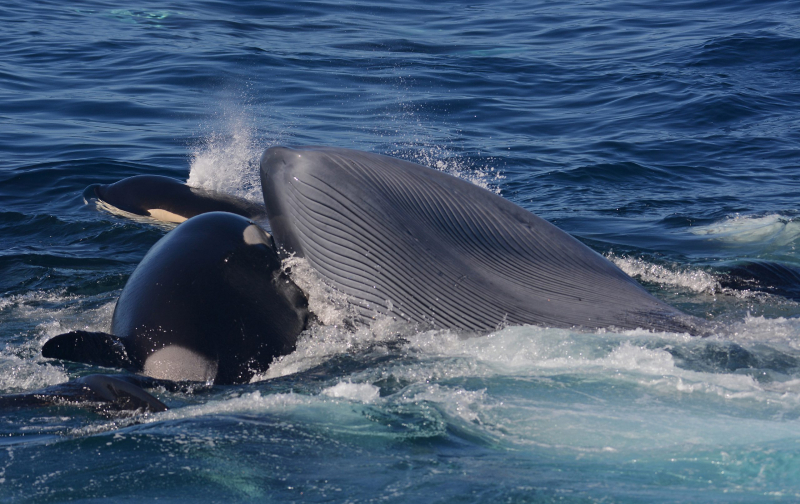Orcas
The orca, sometimes known as a killer whale, is the biggest member of the marine dolphin family and is a toothed whale. Although different populations of orcas sometimes specialize on certain kinds of prey, orcas have a varied diet. Some dolphin species just consume fish, while others hunt seals and other dolphin species. Baleen whale calves and even adults have been known to be attacked by them. Due to the lack of any other natural predators, orcas are apex predators. It has been said that their highly developed hunting strategies and vocal mannerisms, which are frequently unique to a given group and passed down through generations, are examples of animal culture.
As you wouldn't generally place moose and orcas in the same environment, this one might come as quite a surprise. Nevertheless, moose are skilled swimmers and will cross bays and islands in northern Canada and Alaska. Some nearby killer whales live in these deep waters and are seeking for prey. In comparison to their speed on land, moose move much more slowly in water. The moose will be killed as they swim because the orcas will take advantage of this.
Undoubtedly, orcas are big enough to fight a moose. Additionally, the moose are simple targets for hunters due to their weak aquatic defenses. Since orcas are apex predators and will consume a wide range of aquatic creatures, this comes as no surprise. Because they are carnivores, orcas exclusively consume the flesh of other animals. Orcas use a variety of methods for killing prey, including ramming, biting, and drowning. Orca bite marks may be seen on the flesh of moose carcasses that have washed up on the coast. Orcas are opportunistic hunters, so even if they don't usually hunt moose, they would probably do so if given the chance.








